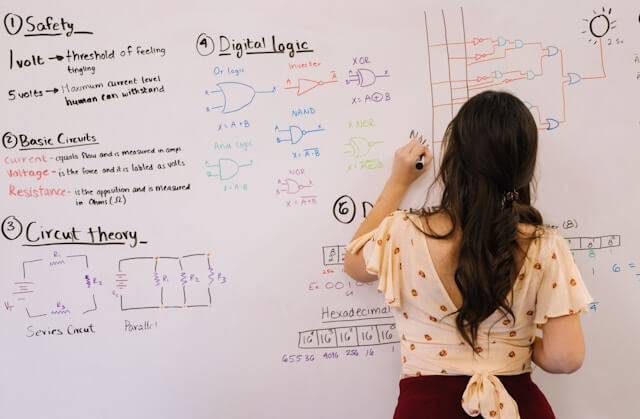The fusion of art and science opens up fresh opportunities in the education sector. It is at the heart of the STEAM approach—Science, Technology, Engineering, Arts, and Mathematics—bringing a holistic perspective to education. It encourages students like you to explore the interconnectedness of different disciplines, revealing how each can enhance and illuminate the others.
By viewing the world through this multifaceted lens, students gain the tools to tackle complex problems, blending analytical thinking with creative expression. This introduction to STEAM is more than an educational trend; it’s a bridge connecting the logical to the imaginative.
The Key Components of STEAM Education
The STEAM approach is more than just an acronym; it’s a philosophy that integrates five key components, each contributing uniquely to the learning experience:
- Science: Delves into the natural world using observations and experiments.
- Technology: Emphasizes the use of tools and techniques to solve problems.
- Engineering: Focuses on designing items and understanding their mechanisms.
- Arts: Encourages creative expression and critical thinking in various mediums.
- Mathematics: Develops quantitative skills for analyzing and interpreting data.
STEAM education creates a learning environment where each field informs and enhances the others. For instance, an engineering project might incorporate artistic design principles, while a math problem could be solved using technology.
Balancing complex equations with creative projects can sometimes be overwhelming. This is where academic help comes into play, offering a lifeline when the workload becomes too heavy. Students get an option to use essayhub.com to pay someone to write my research paper, allowing them to focus on both their scientific inquiries and artistic pursuits.
Turning to academic help does not decrease the significance of a learner’s work. Instead, it emphasizes the significance of interdisciplinary education. It’s about embracing the full range of your interests and finding harmony between the demands of science and the freedom of the arts.
Overcoming Obstacles with Creativity
One of the most empowering aspects of STEAM education is its emphasis on creative problem-solving. When students face academic or practical challenges, the STEAM approach encourages them to think outside the box and apply creative strategies to overcome obstacles.
This might involve designing an innovative experiment to test a hypothesis or using digital art tools to visualize complex scientific concepts. By fostering an environment where creativity is a valuable asset in problem-solving, STEAM education helps students develop resilience and flexibility.
Benefits of an Integrated Curriculum
Integrating STEAM approaches in modern curricula offers numerous benefits, significantly enriching the educational experience. For starters, it encourages critical thinking and problem-solving skills by presenting students with complex, real-world issues that require a multidisciplinary approach. This method cultivates a mindset that values diverse perspectives, recognizing that the most effective solutions often emerge from the intersection of different fields.
As industries increasingly value innovation and adaptability, the ability to blend scientific knowledge with artistic creativity becomes a highly sought-after skill. This educational framework not only equips students with a broad set of competencies but also inspires a lifelong love of learning.

The Future of STEAM Education
As we look to the future, the role of STEAM education in preparing students for the challenges and opportunities of the 21st century becomes increasingly clear. Educators are crafting a curriculum that is not only relevant but also engaging and inspiring.
This comprehensive learning strategy guarantees that students are thoroughly prepared to tackle the intricacies of today’s world. As STEAM continues to gain momentum in educational systems around the globe, it promises to unlock new potential in the next generation of learners.
The Bottom Line
The integration of STEAM approaches in modern curricula heralds a transformative shift in education, blending the analytical rigors of STEM with the boundless creativity of the Arts. In embracing this multifaceted approach with innovative projects, problem-solving, and the best chemistry homework help services, we unlock the full potential of students, equipping them with the skills to thrive. The harmonious union of STEAM enhances learning and empowers students to tackle real-world challenges with innovative and interdisciplinary solutions.
Author Bio
Writer Nicole Hardy, a distinguished journalist in the realms of education and the arts, is celebrated for her thorough and discerning coverage of performing arts education. Her career, which extends beyond ten years, has solidified her status as an authoritative figure in this domain. Hardy is praised for her thorough analyses and captivating writing manner. She earned her Master’s in Journalism from the University of Arts, with a focus on arts, culture journalism and now she provides amazing student friendly content on News.EssayHub
